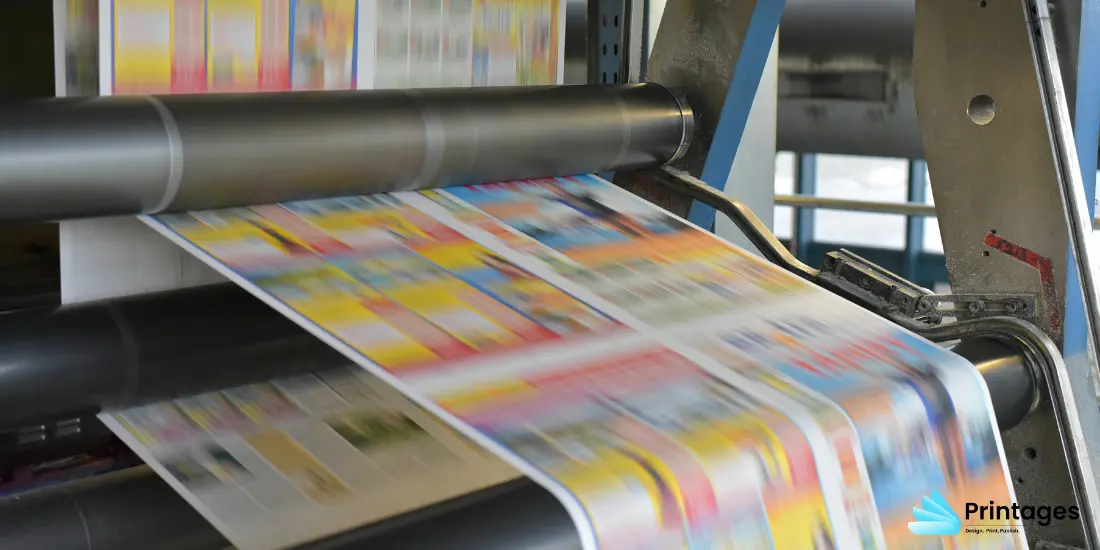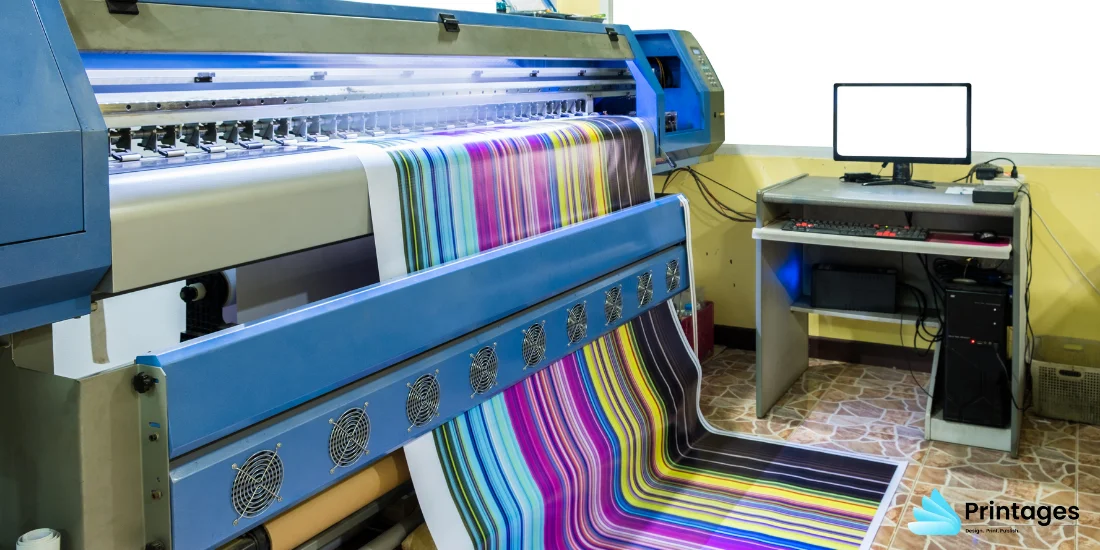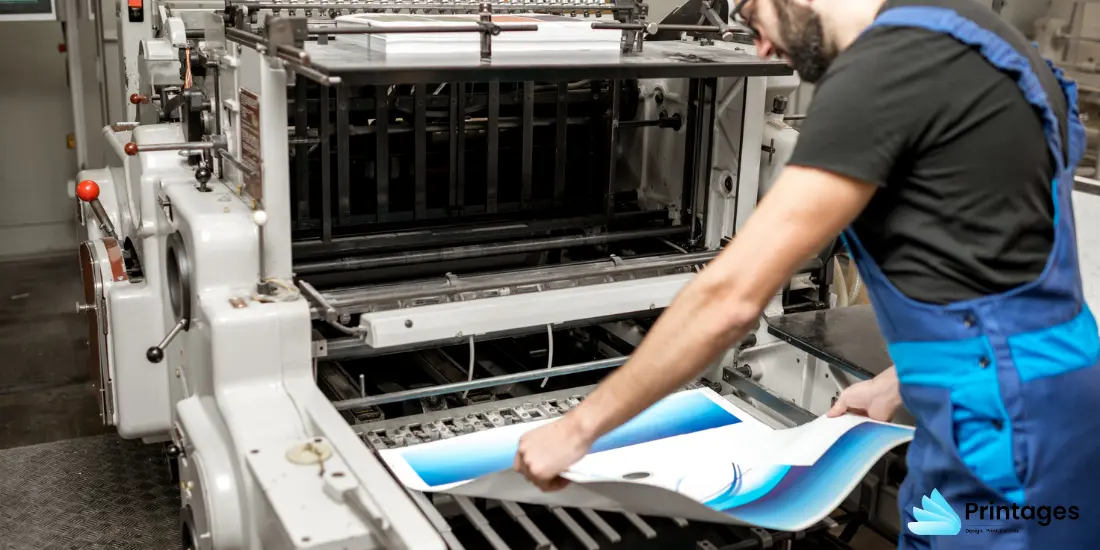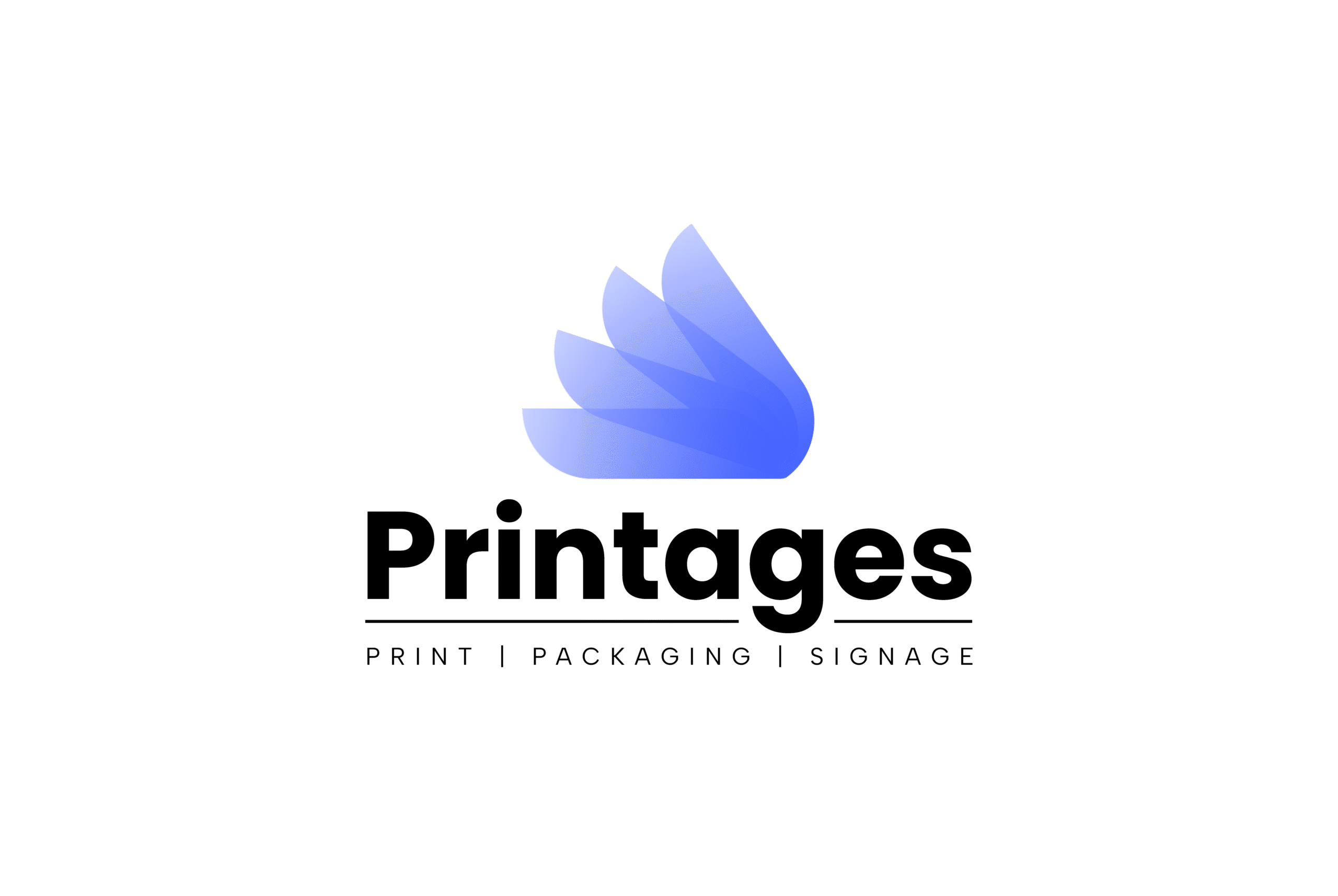What Is Panaflex Printing? Process for Durable Displays

In the ever-evolving world of advertising, where first impressions can make or break a brand’s success, the importance of impactful signage cannot be overstated. Among the plethora of options available, Panaflex Printing stands out as a versatile and effective method for creating high-quality signage. But what exactly is Panaflex Printing, and how does it contribute to the world of outdoor advertising?
Let’s delve into this comprehensive guide to understand the intricacies and benefits of Panaflex Printing for outdoor signage.
Below are the topics we’ll explore in this blog post:
- What is Panaflex Printing?
- What are the Materials Used in Panaflex Signage?
- How do I Print Panaflex?
- Printing Time for Large Panaflex Banners
- How to Print Business Cards from a Panaflex Machine?
- What Pixels Are Used for Panaflex Printing?
- Advantages of Panaflex Printing
- Risks of Panaflex Printing
What is Panaflex Printing?

Panaflex is a special kind of material used for making signs that light up. It’s great for outdoor signs because it’s tough and can handle bad weather. Plus, it lasts a long time without tearing.
You can use Panaflex for all sorts of signs, like warning signs, posters, or light-up boxes. It’s easy to attach to different frames, so you can put it almost anywhere.
What’s cool about Panaflex is that it makes your designs look amazing. It has a smooth, shiny surface that makes colors pop. You can print your designs on it using special ink, and they’ll look super bright, even at night. So, if you want your signs to stand out and grab attention, Panaflex is the way to go!
What are the Materials Used in Panaflex Signage?
To fabricate a Panaflex sign, you’ll need the following materials:
- Steel Angular Bars: These are used to create the frame or structure for mounting the Panaflex substrate. Steel angular bars provide stability and support for the sign.
- GI or Galvanized Iron Metal Sheets: These sheets, are commonly used as backing panels for Panaflex signs. They provide a sturdy surface for mounting the Panaflex substrate and help protect the sign from environmental elements.
- Panaflex Substrate: The main component of the sign, Panaflex Substrate, is a translucent canvas that allows light to pass through. It serves as the canvas for printing or applying designs and graphics.
- Vinyl Stickers: Vinyl stickers are often used for adding text, logos, or additional graphics to the Panaflex substrate. They offer versatility and precision in design elements.
- Paints: Paints may be needed for customizing the frame or structure of the sign, as well as for touch-ups or additional detailing. Choose paints suitable for outdoor use if the sign will be exposed to the elements.
- Fluorescent Lamps: These are used to illuminate the Panaflex sign from within, providing visibility both during the day and at night. Fluorescent lamps come in various sizes and wattages to suit the dimensions of the sign.
- Accessories: Various accessories may be needed depending on the specific design and installation requirements. This can include screws, bolts, nuts, brackets, hinges, and electrical components for wiring the fluorescent lamps.
By gathering these materials, you’ll have everything you need to fabricate a Panaflex sign efficiently and effectively. Additionally, ensure that you have the necessary tools for cutting, drilling, and assembling the components to complete the fabrication process.
How do I Print Panaflex?

Printing on Panaflex requires specific equipment and materials to ensure high-quality results. Here’s a detailed guide on how to print on Panaflex:
1. Design Preparation:
- Use graphic design software like Adobe Photoshop, Illustrator, or CorelDRAW to create or prepare your design. Ensure that the design dimensions match the size of the Panaflex sheet you’ll be printing on.
- Adjust the design’s resolution to ensure clarity and sharpness, especially if it includes images or intricate details.
2. Choose Printing Method:
- Decide whether you’ll use an inkjet printer or a solvent printer based on your project requirements.
- Inkjet printers are suitable for smaller-scale projects and offer excellent color reproduction. Solvent printers are preferred for larger-scale printing and outdoor applications due to their durability and weather resistance.
3. Select Printing Materials:
- Choose the appropriate printing materials for your design. This typically includes translucent ink or pigment specifically formulated for use on Panaflex material.
- Ensure compatibility between the printing materials and your chosen printing method (inkjet or solvent).
4. Printer Setup:
- Ensure to set up your printer following the manufacturer’s instructions, which include installing the correct print heads and cartridges and adjusting printer settings accordingly.
- Calibrate the printer for printing on Panaflex material to ensure proper ink deposition and color accuracy.
5. Load Panaflex:
- Prepare the Panaflex sheet by ensuring it’s clean and free from dust or debris.
- Place the Panaflex sheet into the printer’s feed tray or platen, ensuring proper alignment and secure placement to prevent misfeeds or skewing during printing.
6. Print:
- Send your prepared design file to the printer using the appropriate software or driver.
- Initiate the printing process and monitor the print job to ensure proper ink coverage and color fidelity.
- Adjust printer settings as needed to optimize print quality, such as print speed, resolution, and color management options.
7. Drying:
- After printing is complete, allow the printed Panaflex sheet to dry thoroughly before handling or further processing.
- Depending on the ink type and environmental conditions, drying times may vary. Consider using drying equipment such as fans or heaters to expedite the process if necessary.
8. Finishing Touches:
- Once the printed Panaflex is fully dry, trim it to the desired size using a sharp cutting tool or trimmer.
- Depending on your project requirements, you may need to apply additional finishing touches, such as mounting the Panaflex onto frames, adding lighting elements, or installing it as a standalone sign.
By following these steps and paying attention to detail, you can achieve professional-quality prints on Panaflex material for a variety of signage applications. If you encounter any difficulties or have specific questions about the printing process, don’t hesitate to consult with a printing professional or supplier for assistance.
Printing Time for Large Panaflex Banners:
The printing time for large Panaflex banners can vary depending on several factors, including the size of the banner, the complexity of the design, the type of printer being used, and the printing speed of the equipment. In general, larger banners will naturally require more time to print compared to smaller ones.
As a rough estimate, printing a large Panaflex banner could take anywhere from a few hours to several hours, or even longer for exceptionally large or intricate designs. Factors such as the resolution of the print, the number of colors used, and any special effects or finishes (such as laminating) can also affect the printing time.
Additionally, some printers may offer faster printing speeds or be capable of handling larger print jobs more efficiently, which can shorten the overall printing time.
It’s essential to consult with your printing service provider or review the specifications of the printing equipment to get a more accurate estimate of the printing time for your specific project. Factors such as workload, availability of materials, and production schedules may also influence the turnaround time for printing large Panaflex banners.
How to Print Business Cards from a Panaflex Machine?
Printing business cards from a Panaflex machine involves adapting the equipment and process typically used for large-format printing to accommodate the smaller size and specific requirements of business card printing. Here’s a general overview of the steps involved:
1. Prepare the Design:
Create or design your business card artwork digitally using graphic design software. Ensure that the design meets the standard dimensions for business cards (typically 3.5 inches by 2 inches) and includes all necessary information, such as your logo, contact details, and any branding elements.
2. Set Up the Printer:
Adjust the settings on the Panaflex machine to accommodate the smaller size of business cards. This may involve configuring the print settings, adjusting the feed mechanism, and ensuring that the printer is calibrated correctly for precise printing.
3. Load the Material:
Use a suitable material for printing business cards on the Panaflex machine. While PVC sheets are commonly used for large-format printing, for business cards, you may opt for thinner and more flexible materials such as cardstock or paperboard. Ensure that the material is loaded securely and aligned properly for printing.
4. Print the Design:
Initiate the printing process, making sure to select the appropriate print settings such as resolution, color profile, and print quality. The Panaflex machine will transfer the digital design onto the material, producing multiple copies of the business card design in a single print run.
5. Cutting and Finishing:
Once the printing is complete, cut the printed material into individual business cards using a cutting tool or guillotine cutter. Ensure precise cutting to maintain the integrity of each business card. Additionally, you may choose to add finishing touches such as rounding the corners or applying a protective coating for a professional appearance.
6. Quality Control:
Before finalizing the printing process, conduct a quality check to ensure that the printed business cards meet your expectations in terms of color accuracy, clarity, and overall appearance. If required, make the necessary adjustments or corrections to ensure optimal printing results.
7. Packaging and Distribution:
Once the business cards are printed and quality-checked, package them securely for distribution or storage. Consider using protective sleeves or containers to prevent damage during transport or handling.
By following these steps and adapting the Panaflex printing process for business card production, you can create professional-quality business cards efficiently and effectively using a Panaflex machine. If you’re unfamiliar with the process or require assistance, consider consulting with a printing service provider with expertise in business card printing for guidance and support.
What Pixels Are Used for Panaflex Printing?
For Panaflex printing, the recommended pixel resolutions can vary depending on the desired print quality and size of the final output. Here are some general guidelines:
1. Standard Quality Print:
- Resolution: 900 x 1260 pixels
- This resolution provides a good balance between file size and print quality. It’s suitable for standard-sized prints where high detail may not be critical.
2. High-Quality Print:
- Resolution: 1200 x 1680 pixels
- This resolution offers enhanced detail and sharpness compared to standard quality. It’s ideal for larger prints or when higher detail is desired.
3. Premium Quality Print:
- Resolution: 1500 x 2100 pixels
- This resolution provides the highest level of detail and clarity, making it suitable for large-format prints or applications where image quality is paramount.
Ultimately, the choice of pixel resolution depends on factors such as the size of the printed material, viewing distance, and desired level of detail. It’s essential to balance image quality with file size to ensure efficient printing and satisfactory results. Adjusting the resolution based on these guidelines will help achieve optimal print quality for Panaflex printing.
Advantages of Panaflex Printing:
Panaflex printing offers several advantages that make it a popular choice for outdoor signage and advertising campaigns. Here are six key benefits:
1. Versatile Material:
Panaflex, made of polyvinyl chloride (PVC), can be molded into flat sheets of various thicknesses, widths, and colors. It’s easily cut and bent into unique shapes, making it highly adaptable for custom signage needs.
2. Wide Range of Applications:
Rigid Panaflex signs are incredibly versatile and widely used for various applications, such as roadside signs, retail displays, menu boards, yard signs, and trade show signage.
3. Lightweight yet Sturdy:
Panaflex banners and signs are lightweight yet remarkably durable, even in larger sizes. This makes them easy to transport, handle, and mount using a variety of methods.
4. Durable Construction:
Panaflex signs are highly durable, resistant to scratches and dents, and capable of withstanding harsh weather conditions like heavy rain. Their color retention properties ensure they remain vibrant even with prolonged exposure to light.
5. Affordability:
Panaflex signs, especially customized ones, are cost-effective compared to alternatives. Working with a skilled sign builder can help you create effective signage tailored to your marketing objectives without breaking the bank.
6. High-Quality Appearance:
Despite their affordability, Panaflex signs maintain a professional appearance with high-resolution images and vivid colors. The matte surface reduces glare, ensuring visibility and aesthetic appeal in various lighting conditions.
Overall, Panaflex signage offers a winning combination of versatility, durability, affordability, and a high-quality appearance, making it an excellent choice for businesses looking to create impactful signage solutions.
Conclusion:
In conclusion, Panaflex Printing offers a versatile and effective solution for creating high-quality outdoor signage. From its adaptable material and wide range of applications to its lightweight yet durable construction, Panaflex signage proves to be a cost-effective and impactful advertising tool for businesses of all sizes. Despite its advantages, it’s crucial to acknowledge and address the potential risks associated with Panaflex printing, such as environmental concerns, health risks, and challenges in maintaining consistent print quality.
By implementing proactive measures and strategic approaches, businesses can maximize the benefits of Panaflex signage while mitigating potential drawbacks. Ultimately, Panaflex printing stands as a valuable asset in the realm of outdoor advertising, providing businesses with a powerful means of communicating their brand message and attracting customers.
Contact Us:
For expert Panaflex printing services solutions, connect with us via:
WhatsApp = +92332-720-2706
Facebook = Printages
Instagram = Printages.smc
Find us: Click here for directions


